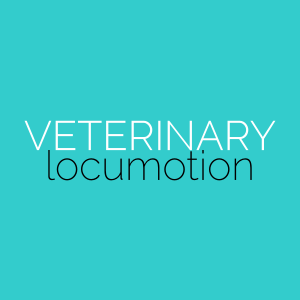
Setting boundaries: 7 key steps towards balancing work, life & play
Setting boundaries means being honest about what you can and cannot handle right now…and often that is a daunting admission…an admission that we are indeed human, have our limitations and need to be constantly balancing and rebalancing work, life and play. Perhaps if we all learned how to set and respect boundaries, we could foster more mutual respect and compassion amongst each other, rather than resentment or anger. And we might just add another small but important facet towards improving the overall mental health of the veterinary profession. Here are some key steps towards setting mutually beneficial boundaries…
It starts with a definition
When taking a fresh approach to something it’s often best to start with a clear definition of the element in question. Usually, a dictionary removes all the fluff and sticks to the facts. And so if we’re going to start reassessing our own boundaries, and others, we need a clear definition.
Boundary: a line that marks the limits of an area; a dividing line.
That seems like a pretty good start. Now, how do we start to apply this in practical, tactical situations?
A daily self-check
We are all creatures of habit. Some more than others. Change isn’t easy. It takes 30 days to establish a new habitual change that will stick and just 3 days to undo it.
So, you need to define your boundaries. These will vary greatly but for most of us, this list will be a good start:
- Define the number of hours you are comfortable working in a normal day
- Define the number of minutes you want to have as clear breaks in your day
- Keep a track of how many times you say no in your day
- Do not take real “Work” work home
Now, go to your smartphone. Open the notes app and write your list of boundaries. Open the alarm app and set an alarm for 15 minutes before you normally start work each day. Call the alarm “Boundaries”. Each time the alarm sounds, go to the notes app and read your boundaries, aloud if you can. This is how you create or change your boundary habit.
You need to have a conversation about hours
One of the biggest pressures we all face is around the number of hours we work. Not only what is expected, but also what we often self-impose. Working long days and extra unpaid hours is often seen as a right of passage or a badge of honour, especially in the medical space, be it human or animal. Stop that. It is not a badge of honour, it is a slippery slope towards the challenges our industry faces in terms of mental health and retention of veterinary professionals within the industry. Talk to your manager, and your fellow team members, about what is a reasonable number of hours for you to work in a day or week, and then agree on a mechanism that will allow things to be addressed when exceeding your boundary hours becomes the norm instead of the exception.
And if you are starting a new job, this is an ideal opportunity to set your boundaries in relation to working hours. Once you have a signed employment agreement, you need to have a reaffirmation of what you probably only touched on during the recruitment process. A simple, clear conversation that revisits the work-life balance that you more than likely mutually discussed and that defines starting times, ending times, what constitutes overtime and how much overtime is reasonable for all parties and how formal breaks are structured and managed.
Give me a break
Relentless, constant pressure creates stress. Stress is bad. Formally defined breaks create discontinuity in that constant pressure that allows us all to regroup, gather our thoughts, take a deep breath and recharge.
The keys to successfully creating boundaries around breaks include:
- Agree on break times with your peers and managers and help each other to stick to the break time you’ve agreed.
- Set an alarm on your phone to prompt you that it is time for your break
- Plan to do something in your break that you enjoy
- Find a place to take your break that is away from the day-to-day hubbub, or go for a walk
Real work stays at work
Reading, online research, listening to a podcast. All reasonable “at home” extension of work that can be both useful as well as interesting. But doing “Work” with a capital W at home is simply a recipe for disaster. It’s such a big boundary breach and yet so many of us are drawn into it. And the recent trends towards working remotely for at least some of the time make this boundary even more difficult to establish.
The easy answer is don’t bring “Work” work home. Period. And for these of us that do need to work outside of a defined workspace, create a defined are in your home that is only for work. Work there, and only there, and when you are not there, don’t do work. Oh, and use the term “I’m working remotely today” and not “I’m working from home”, it makes a difference.
And speaking of habits, you need an “end of work” habit. For some that is as easy as walking out the door, or the commute home listening to your favourite music or podcast. Others need something more such as taking their dog for a walk, playtime with children or a short yoga or meditation session when you get to the end of your workday. Remember that definition we mentioned at the beginning? “A dividing line” is what these create.
No is not a taboo
In a world where we have been brainwashed into saying yes at almost every moment, saying no seems to have become a taboo. It’s not. But how to say no is an art.
So when you are asked to do something outside your boundaries, the ideal response for you is any variation of “That’s kind of you to think of me but I can’t.” No reason, no excuse, not even a because. And then wait. Nine out of ten times that will be it. And when you do get the “Why not?”…the reply is another simple one…“It doesn’t suit me.” And for the one per cent who push harder something more direct. “I’m trying to establish an ideal balance between my work and my life and doing that is going to put that at risk.”
This will take some practice.
10,000 hours
In his book Outliers, Malcolm Gladwell, author of five New York Times bestsellers on the subjects of change and success, said it takes 10,000 hours of intensive practice to achieve mastery of complex skills and materials, like playing the cello like Yo-Yo Ma or getting as good as Bill Gates at computer programming.
Hopefully, it won’t take you 10,000 hours to master how to set boundaries but it will take some practice. That daily self-check we began with is an essential couple of mindful minutes at the commencement of your workday that will set the scene for the rest of day and remind you about the importance of setting boundaries.
And here is your boundary setting checklist:
- I am going to repeat my defined boundaries to me
- How many hours did I spend at work yesterday?
- How many minutes did I sit down and have a clear break yesterday?
- Did I take any work home yesterday?
- Did I say no to anything yesterday?
Now practice these.
What will success look like?
In the end, few people completely master the art of setting boundaries.
We are all human, and in the veterinary world, in particular, our destiny on a daily basis is often at the whim of circumstance…a poorly pet with an unexpectedly complex condition, a colleague with a family emergency or even a pandemic. In those situations we do what we do best…we help and we deal with the longer-term impact when we have the opportunity to think more clearly and objectively.
Outside of those situations, we need to create boundaries and set limits in order to balance out those unplanned experiences. Talking openly about expectations, regular non-critical hours, defined breaks, learning to say no and creating habits around those elements, and more, will help build a more solid foundation for your own mental health, and that of others.
So don’t think of setting boundaries as a dividing line, but more a recognition and acceptance of our limits, limits that we can become more comfortable with, and that may well help guide us all on the right path to improving the overall mental health of the veterinary profession.
Veterinary Locumotion is brought to you by the Team that also drives Veterinary Jobs Marketplace, the leading global veterinary jobs marketplace…
Every Veterinarian, Veterinary Nurse or Veterinary Technician can now enjoy our elegantly simple, extremely flexible and highly professional platform. Publish your Profile and post your Availabilities – from just a single day to multiple days and weeks, and up to 400 days in advance – and be instantly Matched with Locum Relief jobs and work opportunities locally, interstate or internationally.
Veterinary Employers can now enjoy our elegantly simple, extremely flexible and highly professional platform. Publish your Business Profile and post your open shift Needs – from just a single day to multiple days and weeks, and up to 400 days in advance – and be instantly Matched with Locum Relief team members locally, interstate or internationally.
And both of you will really enjoy receiving Alerts when there is a Match.
Just like Netflix, Spotify or Disney+, Veterinary Locumotion works on a simple, transparent, low-cost subscription and stamp model.
Completely transparent. No agency fees. No hourly rate markups. No complex arrangements or middlemen. No payment delays. Employers and Veterinarians, Veterinary Nurses or Veterinary Technicians deal directly with each other. No-one in between, not even us!
Discover more about our Veterinary Locum Relief Marketplace and get all of the answers to your FAQ’s here.
